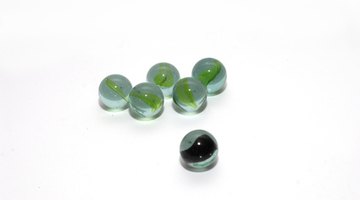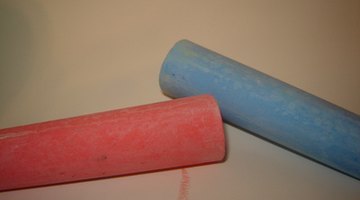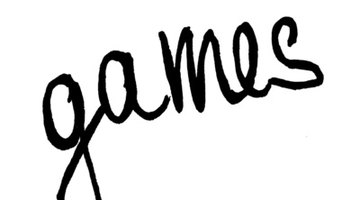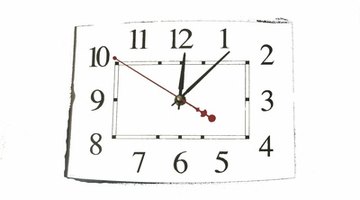Scottish streets and school playgrounds have seen their share of traditional children's games. From ball games to running and catching games, children were never still during play time. Although modern health and safety rules have put a stop to many of them in case of injury, they still play some of the games at clubs and organisations, as well as schoolyards.
Bools

Boys played games of bools in every Scottish playground, using coloured marbles. Two boys played against each other, using their own collection of bools. One boy throws his first bool to land a few yards away. The next boy must hit it with one of his own, or land within a hand's span distance. If he is successful, he takes the opponent's bool. They play until the person who collects the most bools is the winner.
- Boys played games of bools in every Scottish playground, using coloured marbles.
- The next boy must hit it with one of his own, or land within a hand's span distance.
Plainy-Clappy

While boys played football, or "footie", Scottish girls bounced a small ball against a wall while singing a chant with actions. A normal bounce against the wall and catch was plainy. On the next bounce the girl clapped her hands before catching the ball, which was clappy. The rest of the rhyme had further instructions, such as turn-a-round, when the girl circled her hands before catching the ball.
- While boys played football, or "footie", Scottish girls bounced a small ball against a wall while singing a chant with actions.
- The rest of the rhyme had further instructions, such as turn-a-round, when the girl circled her hands before catching the ball.
Peever Beds

A kind of hopscotch, girls drew peever beds in chalk on the sidewalk, or ground, with increasing numbers in each box, or bed. The peever itself was a small empty round tin. Starting with the peever in box number one, the girl hops while trying to edge the tin into the next box. If the foot or tin touches the line around a box, the next player takes a turn.
- A kind of hopscotch, girls drew peever beds in chalk on the sidewalk, or ground, with increasing numbers in each box, or bed.
- Starting with the peever in box number one, the girl hops while trying to edge the tin into the next box.
British Bulldog

In British bulldog, a group of children stand to one side of the playground. The "bulldog" stands in the middle of the area. Children need to get to the other side without being caught by the bulldog. When the bulldog shouts "British Bulldog 1,2,3!" everyone runs. If someone is caught, he becomes a bulldog. More bulldogs make it more difficult to get across safely to the other side.
- In British bulldog, a group of children stand to one side of the playground.
What's the time Mr. Wolf?

In What's the Time Mr. Wolf, children line up on one side of the street. One person acts as the wolf and stands with his back to them, half way across the street. The children call, "What's the time Mr. Wolf?" He shouts a random time, such as two o'clock. The children take that number of steps. They ask the time again, and take the steps, trying to get close to the wolf before he knows. When he calls "It's dinner time", he turns and tries to catch the children nearest to him.
- In What's the Time Mr. Wolf, children line up on one side of the street.
- When he calls "It's dinner time", he turns and tries to catch the children nearest to him.
